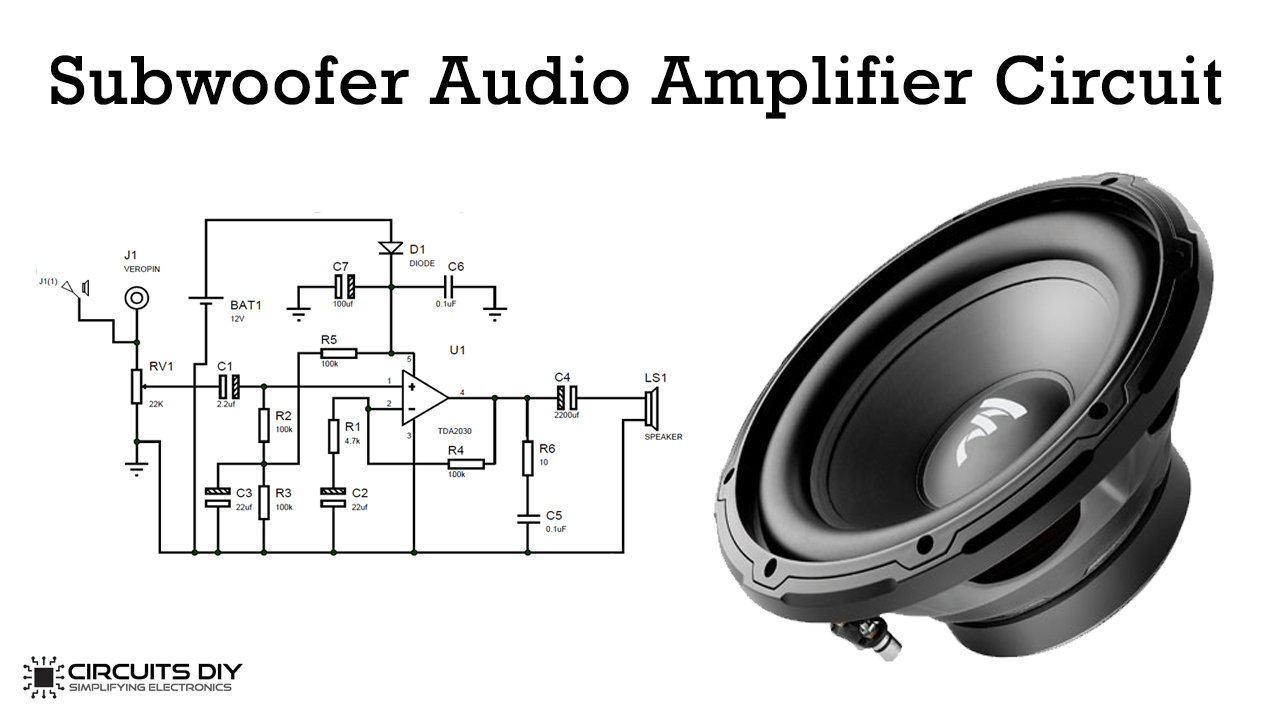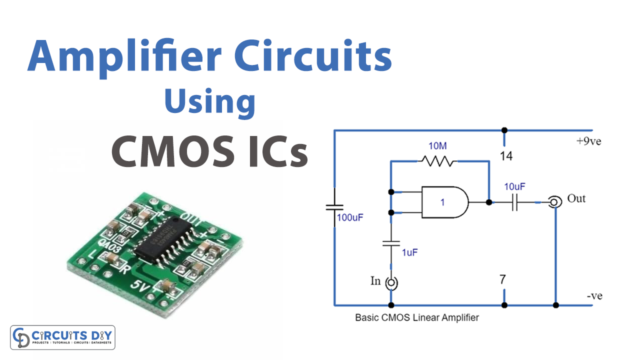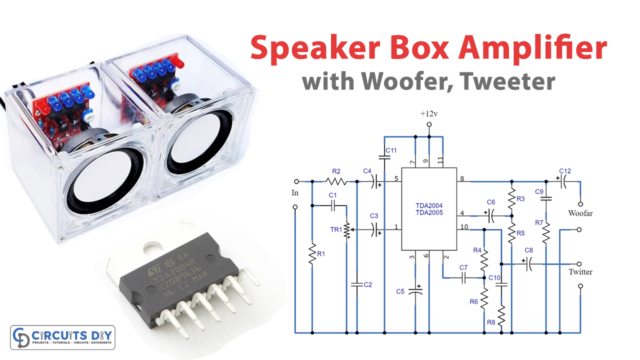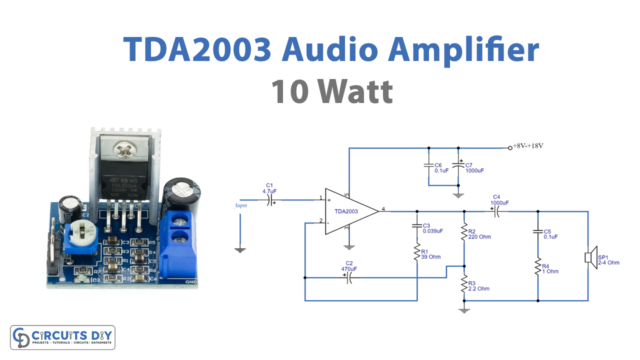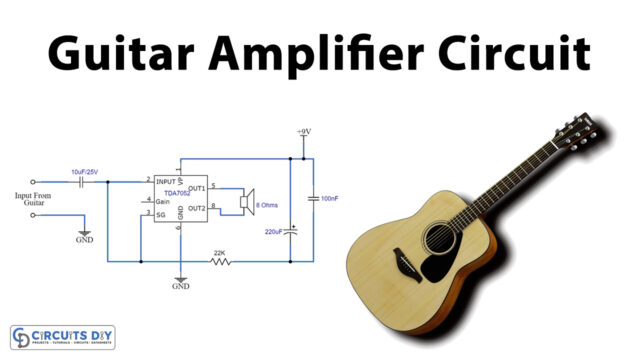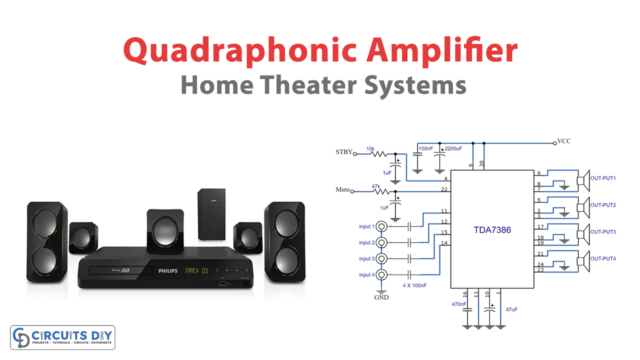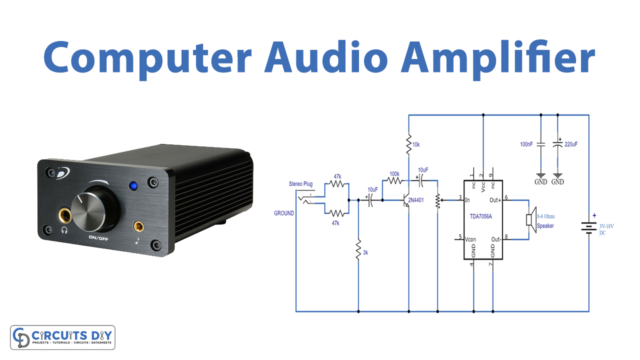A subwoofer amplifier circuit is basically a loudspeaker from which low or small-frequency audio signals are produced. These circuits efficiently improve the audio signals and improve their bass quality.
This amplifier circuit is very useful for creating frequencies of low tone such that the sound output generated from the speaker is steady with a loud bang but the noise of humming is gone. So, on the whole, this complete circuit improves the quality of the sound of your subwoofer by amplifying it.
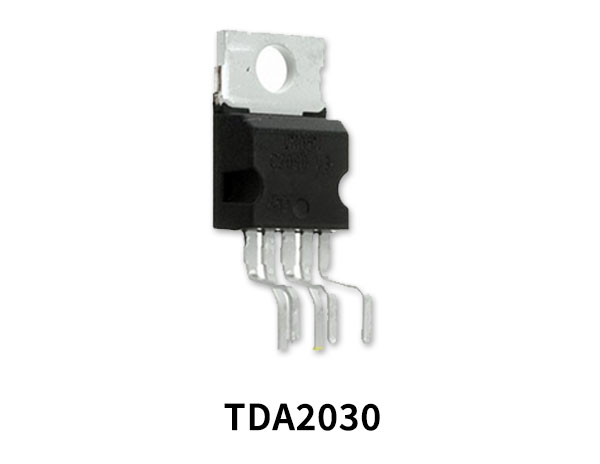
Hardware Components
The following components are required to make Subwoofer Amplifier Circuit
| S.No | Component | Value | Qty |
|---|---|---|---|
| 1. | Breadboard | – | 1 |
| 2. | Hi-Fi Amplifier IC | TDA2030 | 1 |
| 3. | Diode | 1N4007 | 1 |
| 4. | Electrolytic Capacitor | 2.2uF, 22uF, 100uF, 2200uF | 1,2,1,1 |
| 5. | Potentiometer | 100K | 1 |
| 6. | Ceramic Capacitor | 0.1uF | 2 |
| 7. | Resistor | 10ohm, 4.7k, 100k | 1,1,3 |
| 8. | Battery | 12v | 1 |
| 9. | Speaker | 8 ohm | 1 |
TDA2030 Pinout
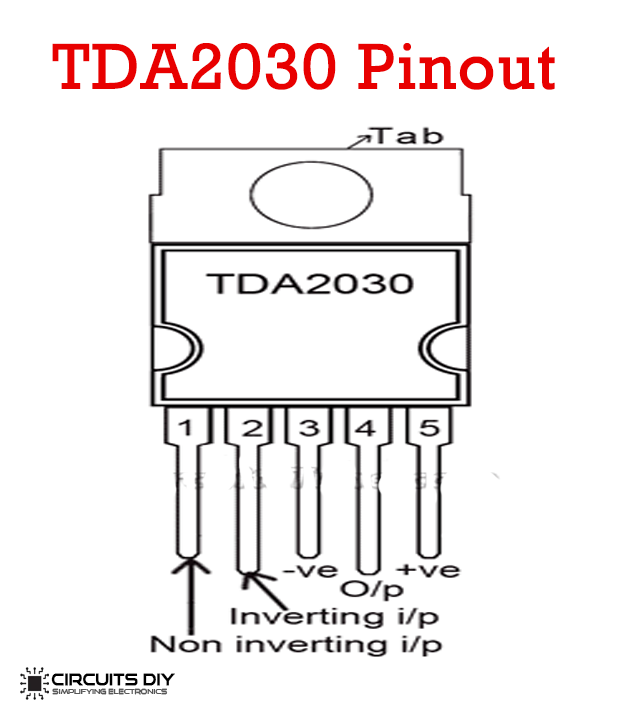
For a detailed description of pinout, dimension features, and specifications download the datasheet of TDA2030
Subwoofer Amplifier Circuit
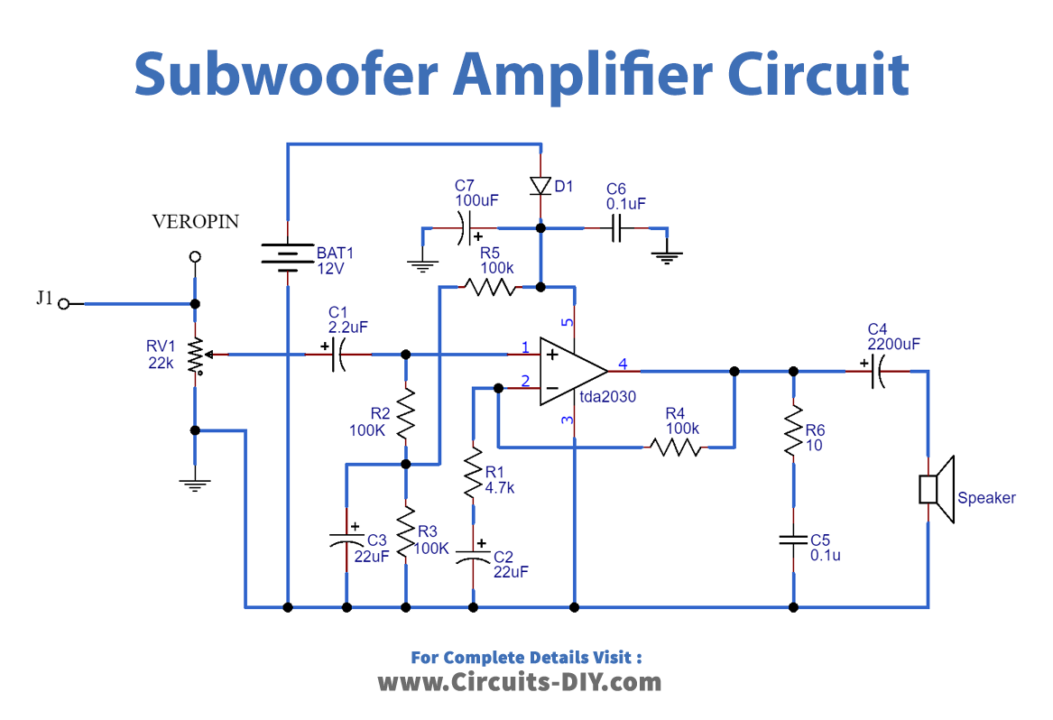
Working Explanation
In this TDA2030-based subwoofer Amplifier Circuit, We have connected a capacitor in series with the non-inverting pin of the TDA2030. Here it is working as the High Pass Filter. So, it allows only the high-frequency audio signal. There is a resistor between pins 2 and 4 called a Feedback Resistor. This feedback resistor is used to obtain gain.
The output of the TDA2030 is connected in series with the capacitor which allows the amplified signal to the speaker. This sub-woofer circuit has the ability to deliver 12 W output.
Here, we can use around 4 to 6-ohm speakers. It is better to use a heat sink to remove the high temperature in the TDA 2030. If needed, you can also add a cooling fan for better working.

